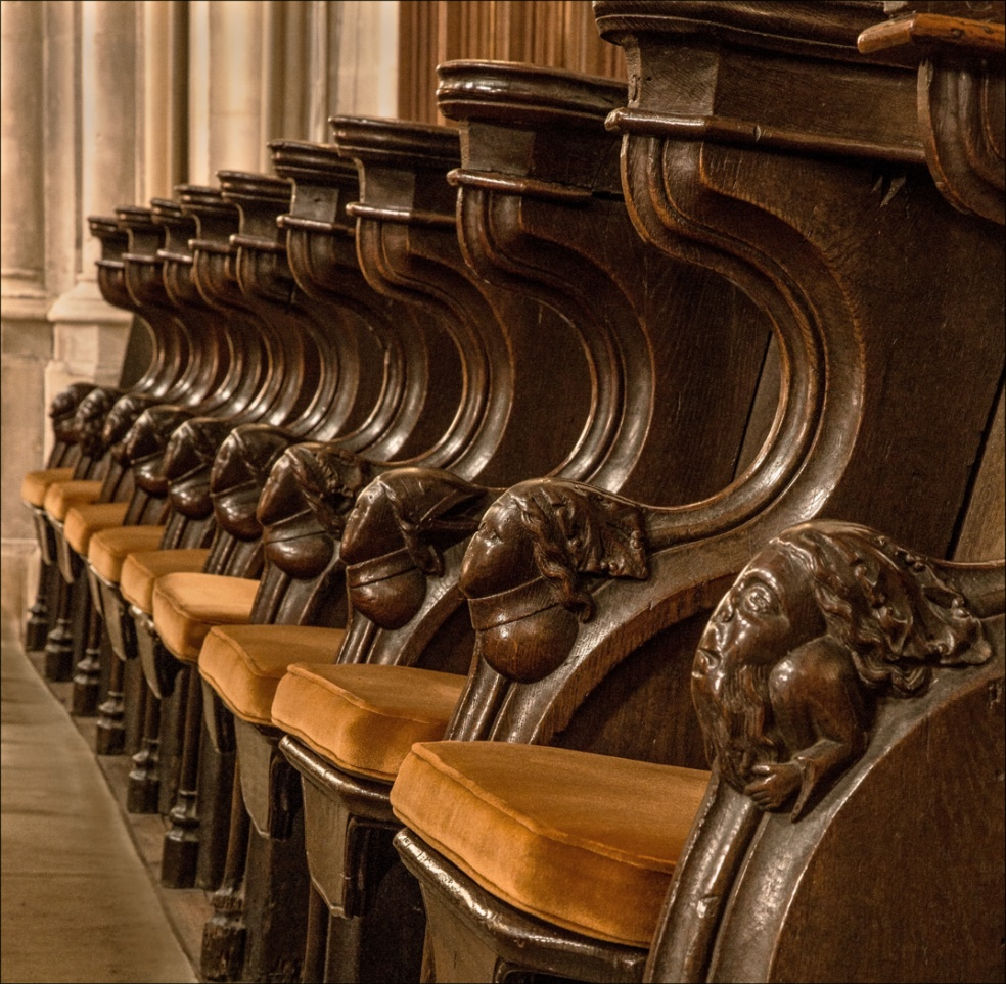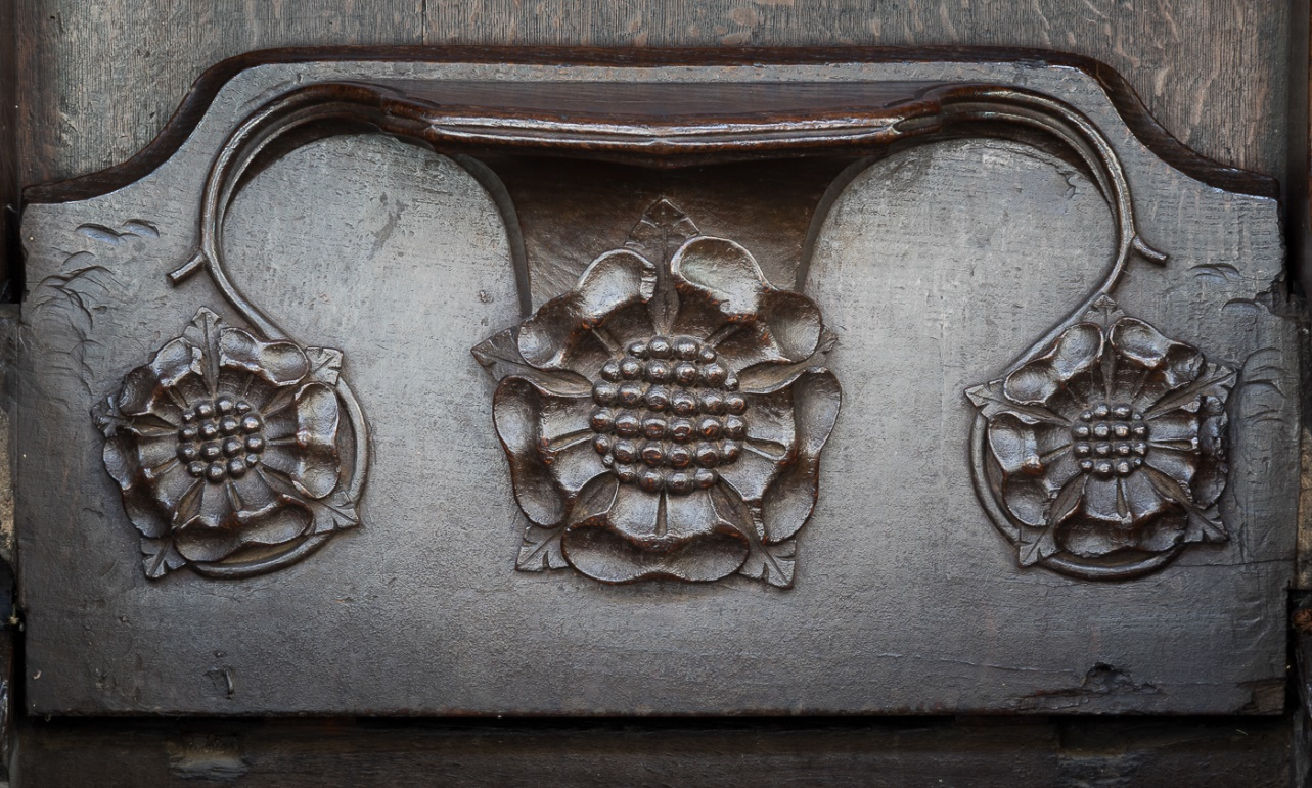
All Saints Heritage Trail
We now pass through the medieval screen opposite the Karkaredg Memorial into
THE CHANCEL
In Christian church architecture, the Chancel is the space containing the High Altar, the Choir and the Sanctuary and is located at the east end of the building. It is generally the area used by clergy and choir during worship, while the congregation is seated in the Nave. In this space were the seats for the 24 priests of the College. They are known as Misericords or “mercy seats”. These seats tip up on a hinge to form a small ledge on the top of the seat. These ledges allowed the priests to appear to be standing, whilst actually they were half-sitting! Under the Misericords are a number of medieval carvings, the most notable being “The Cook”. This can be found halfway down the North Side (by the gap) and shows a man holding a soup ladle and a meat hook in his hands. Other carvings include the Tudor Rose, the Courtenay Arms and a bearded man.

The Misericords
|
The Cook |
The bearded man |

The Tudor Rose
The Archbishop Courtenay Memorial
Set into the floor in the middle of the Chancel is the memorial to the founder of the College. Originally the monument would have been an altar tomb about 1.5 metres (4 feet) high similar to the Wootton tomb found in the South Chancel Aisle. Archbishop Courtenay died from a fever in 1396 whilst staying in the Archbishops' Palace and it was his wish to be buried in All Saints Church. However there is some doubt about whether his wish was carried out since there is also an unnamed tomb in Canterbury Cathedral which is also claimed to be his grave. In 1794 the space underneath the All Saints memorial was excavated and a skeleton found which matched Courtenay’s height but did not contain any rings or other proof of identity.
|
The Courtenay Tomb
|
The Courtenay Tomb |
Wall Paintings
The Chancel is decorated with a complete scheme of oil-painted murals painted on a lime plaster. The paintings date from 1907-1908 and were painted by Clayton & Bell, an eminent London firm who specialised in stained glass windows and painted murals. The decorative work is stencilled and then figure-work is hand-painted directly on to the wall. On the north side, from west to east are St George, St Matthew, St Mark and St David. On the south side from east to west are St Andrew, St John, St Luke and St Patrick. There is a band of text that runs the whole way round and which comes from Psalm 107.
On the north side is verse 31:
Oh that men would praise the Lord for his goodness and for his wonderful works to the children of men
On the south side is verse 32:
Let them exalt him also in the congregation of the people and praise him in the assembly of the elders
|
|
|
|